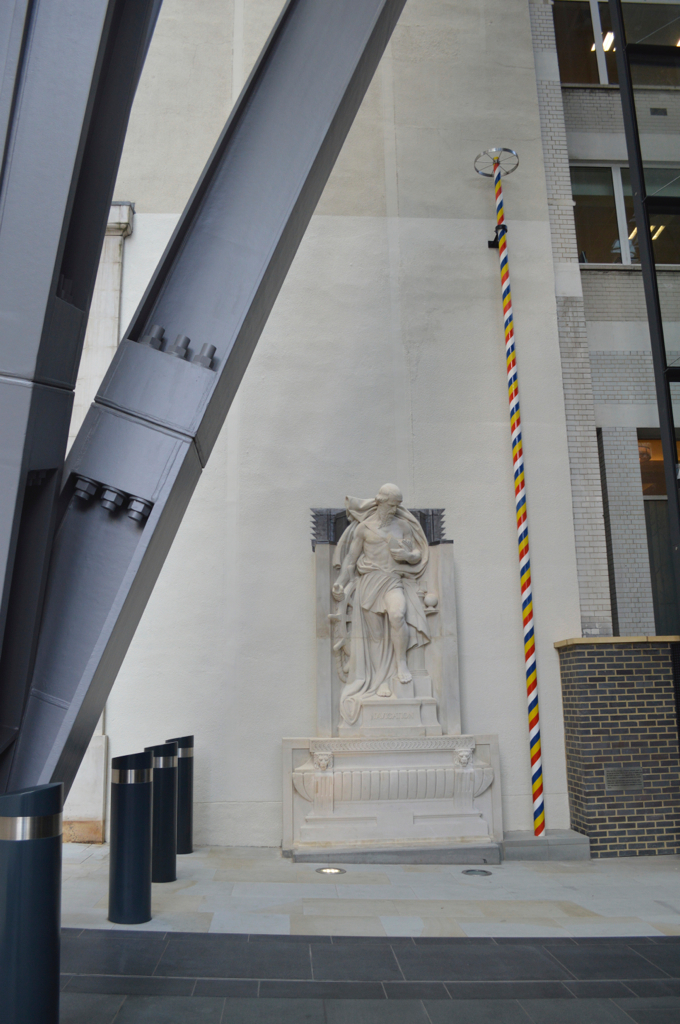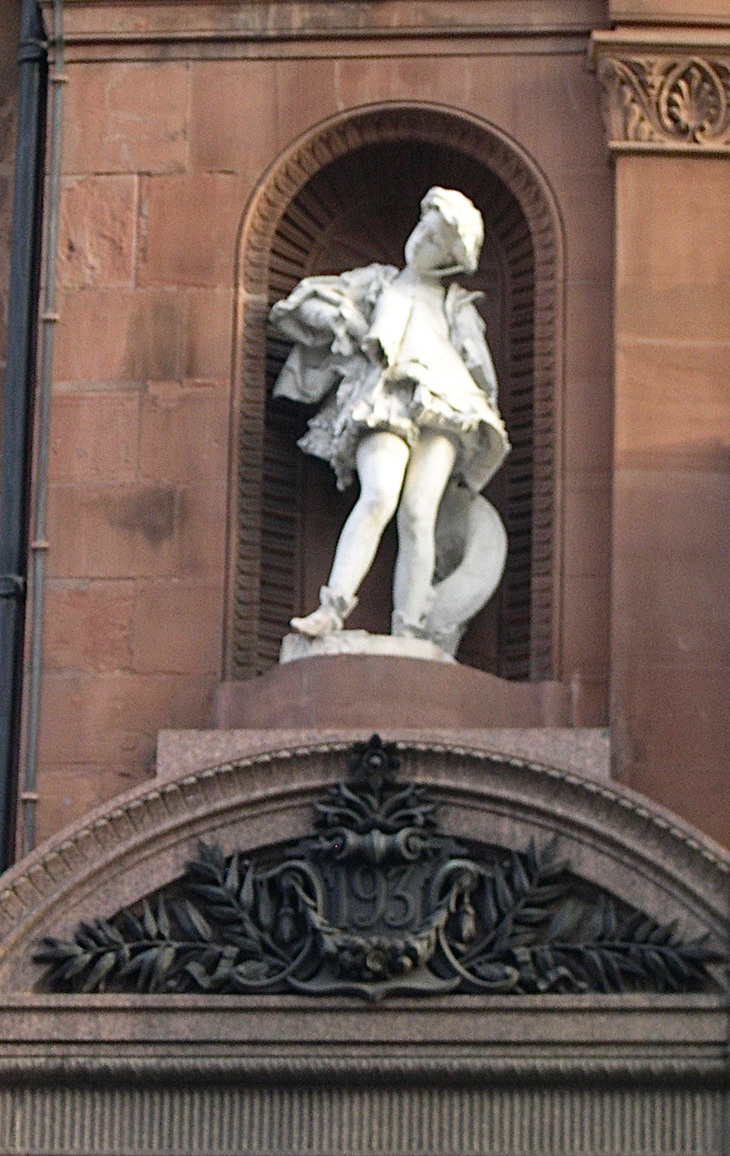Author and top deck lover, Martin Collins, shows us some fascinating things you can spot from the top of a bus in central London. But please save your trip until travel is no longer essential-only.

Comedian ‘Mrs Shufflewick’ used to relate how tired and drunk she climbed the stairs to go to bed, took off all her clothes, only to find she was on top of a bus. When it is cold and raining outside, the top deck of a bus — packed with people, the windows steamed up — can actually be very warm and comfortable.
But what I like particularly about it, is being able to see buildings from a quite different perspective. At ground level, all one can often see are shopfronts, but at some 14 feet up, the magnificent architecture of buildings becomes evident and the sculptures on them. That doesn't preclude looking down to see things of interest at street level, too. Here are some of my favourites:
The 88 Bus from Oxford Circus to Parliament Square

Mosaics on the Apple Store building
At 235-241 Regent Street (west side), the large, arched windows at ground floor level of this 1898 building have between them highly-decorated spaces (spandrels) with stunning mosaics. They feature heraldic shields, including the islands of Murano and Burano, Venice. Why? This was once the showroom of the Venice and Murano Glass and Mosaics Company. In a red and gold mosaic band above are the names of other cities where the company also had showrooms.
Liberty’s Frieze
Across the road, the graceful, smooth curve in Portland Stone of the Regent Street elevation of this building has at its top a 155ft frieze (the longest in London) depicting Britannia and the wealth of distant countries being brought to London by camels, elephants and ships. See the carved figures high up on the roof, looking down; the obelisks with bronze collars and in the first floor railings, figures sitting cross-legged.

33-34 Haymarket
On the east side, as the 88 bus turns from Piccadilly Circus, are unpretentious, brick shops of two bays and four storeys. Built in 1741, number 34 is considered the oldest shopfront in London. Freibourg & Treyer were tobacconists there from 1751 until 1970 and took over Number 33 in 1912. George IV was a customer.
14-16 Cockspur Street (Brazilian Embassy)
Close to the junction with Pall Mall, this 1808 building is easily missed. But look up, to see an al fresco museum of sculptures. Particularly attractive are two caryatids (female supporting figures) above the doorway representing: Asia, standing seductively, and Britannia (dressed to kill!). Between them are two striding putti, one carrying a lotus flower and the other, Britannia’s trident.
The 25 bus travelling through the City from Holborn Viaduct to Aldgate

123-126 Cheapside
On the north side, at the corner of Wood Street, three, simple, two-storey shops, with one room below and one above are from about 1687, though the frontages are much altered since. The terms of the lease forbade a further storey, or the destruction of the plane tree behind in what was the churchyard of St Peter Wood Street. The tree, once famous for a rooks’ nest, is mentioned in the poem by William Wordsworth, The Reverie of Poor Susan.
The ‘Demons’ on 54-55 Cornhill
On this distinctive 1893 terracotta building are grimacing demons, one on the top gable and the other on the second storey. Allegedly, on construction, the building infringed, by a few centimetres, land belonging to the neighbouring St Peter Cornhill church, which demanded the plans be redrawn. The demons scowl at anyone entering the church.
The Maypole on 140 Leadenhall Street
On the north side of the street, under the forecourt of the neighbouring Leadenhall Building, this maypole is best seen as the bus approaches from the opposite side. What's it doing here? A maypole was once erected here each May Day, close to the nearby church of St Andrew Undershaft, so named because the pole was under its shaft. The original maypole was destroyed, but this replica now commemorates it.

The Wolf’s head on the Aldgate pump
At the junction of Leadenhall Street and Fenchurch Street, Aldgate pump is mentioned several times in novels by Charles Dickens. It is close to an ancient well and was once known as the ‘pump of death’ as many died from drinking the polluted water that originated in Hampstead, but passed through graveyards en route. This one was constructed in 1876, when water was supplied by the New River Company. East London used to be referred to as ‘east of Aldgate pump’ and to ‘get the Aldgate pump’ is cockney rhyming slang for to get the hump, i.e. to be annoyed. A ‘draft on Aldgate pump’ referred to a worthless draft, or a fraudulent money transaction, such as a bounced cheque, it being a pun on a draught of the harmful water.
The brass spout in the shape of a wolf’s head was added between 1880 and 1912 and allegedly marks the spot where the last wolf in London was slain. Whether or not this is true, remains to be seen. The pump no longer supplies water, but the handle and grill beneath are still there.
The 15 bus from The Strand to the Tower

Simpson’s at 100 Strand
This famous home of English cuisine on the south side of the Strand has chess pieces depicted in the spandrels above the doorway. A previous building opened in 1828 as a smoking room, the ‘Grand Cigar Divan’ and from about 1850, as ‘Simpson’s Divan and Tavern’, it served roast beef and mutton. It is frequently mentioned in the Sherlock Holmes novels, and Dickens, Disraeli and Gladstone dined there. Simpson's became the ‘home of chess’, with players sitting on the divans or sofas, although that ceased when D’Oyly Carte took it over in and the building was redeveloped in 1903.
‘Kaled’ at 193 Fleet Street
At the corner of Chancery Lane, on George Attenborough and Son Jewelers, is a statue resembling an effeminate young man. It is actually of a woman dressed to look like a man, Kaled, Lara’s page, described in Lord Byron’s tragic poem, ‘Lara, A Tale’.

Discover other interesting things in London from the Top of a Bus by Martin Collins, Clink Street Publishing, RRP £12.99



